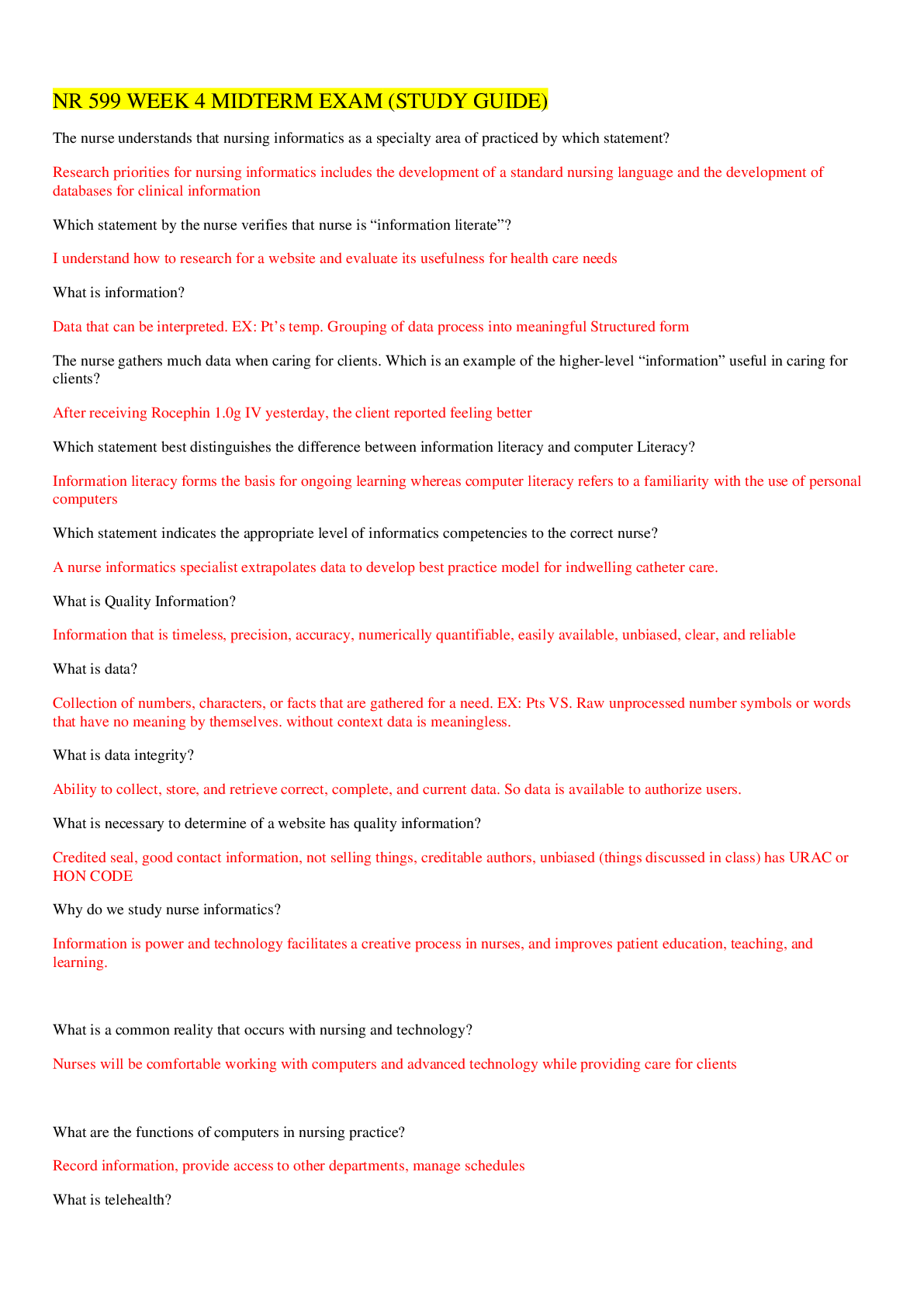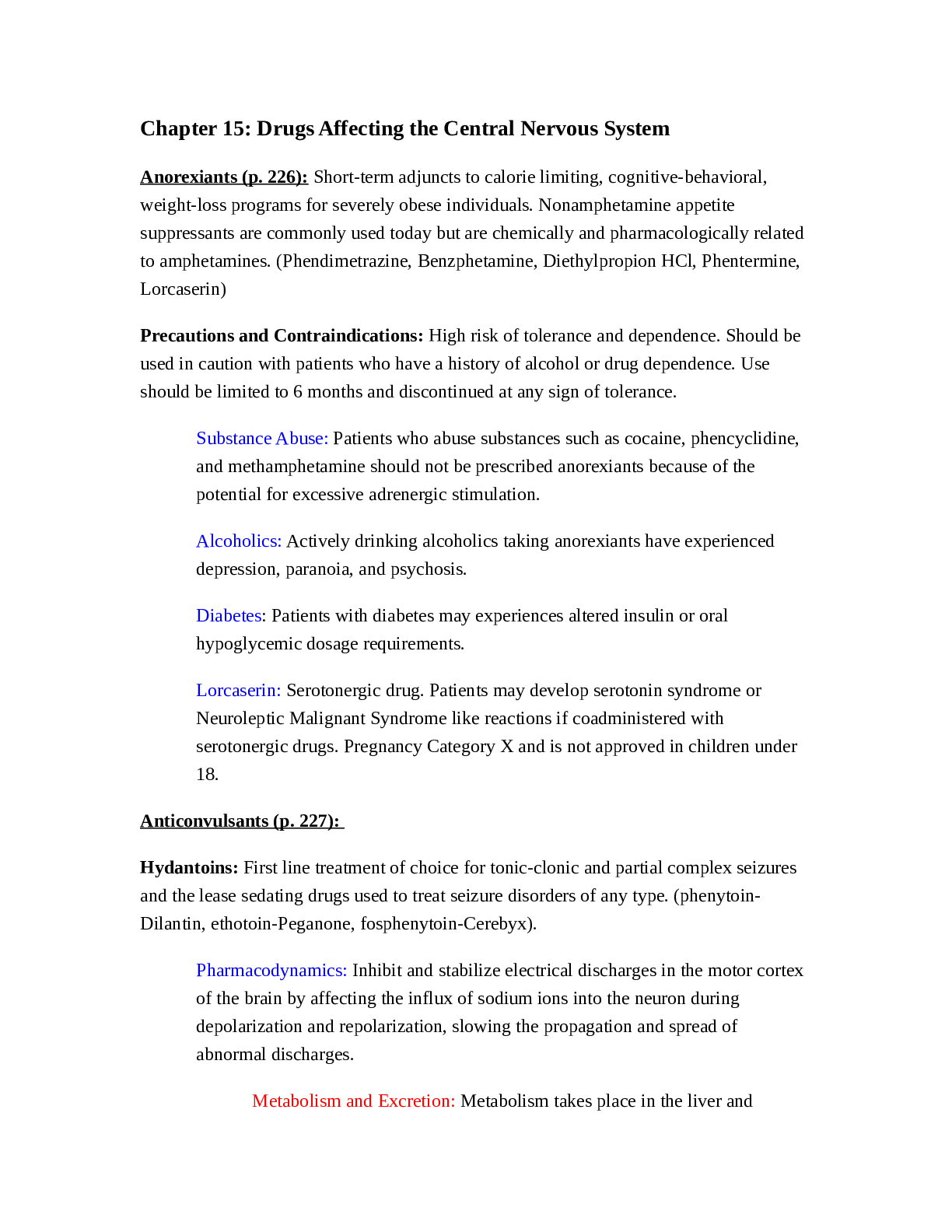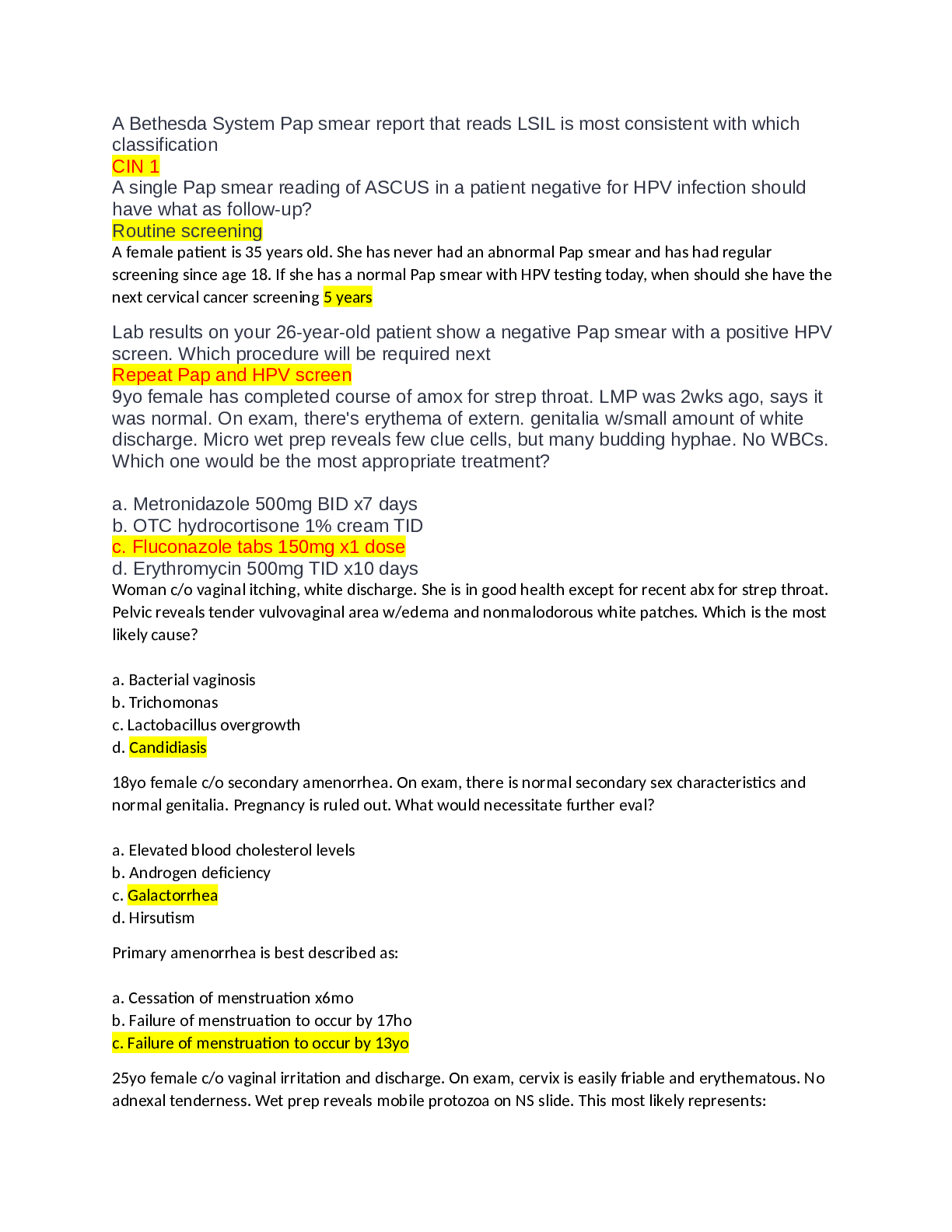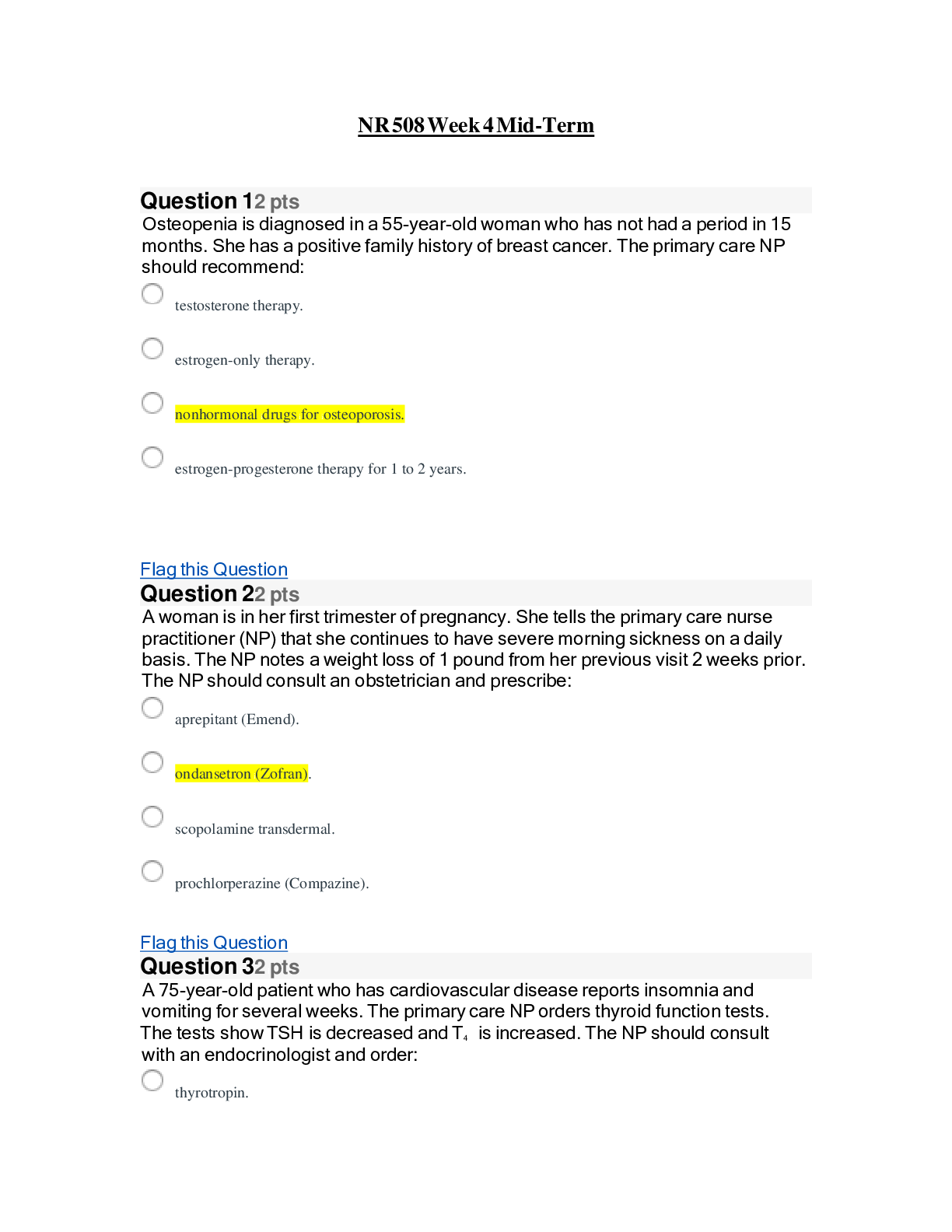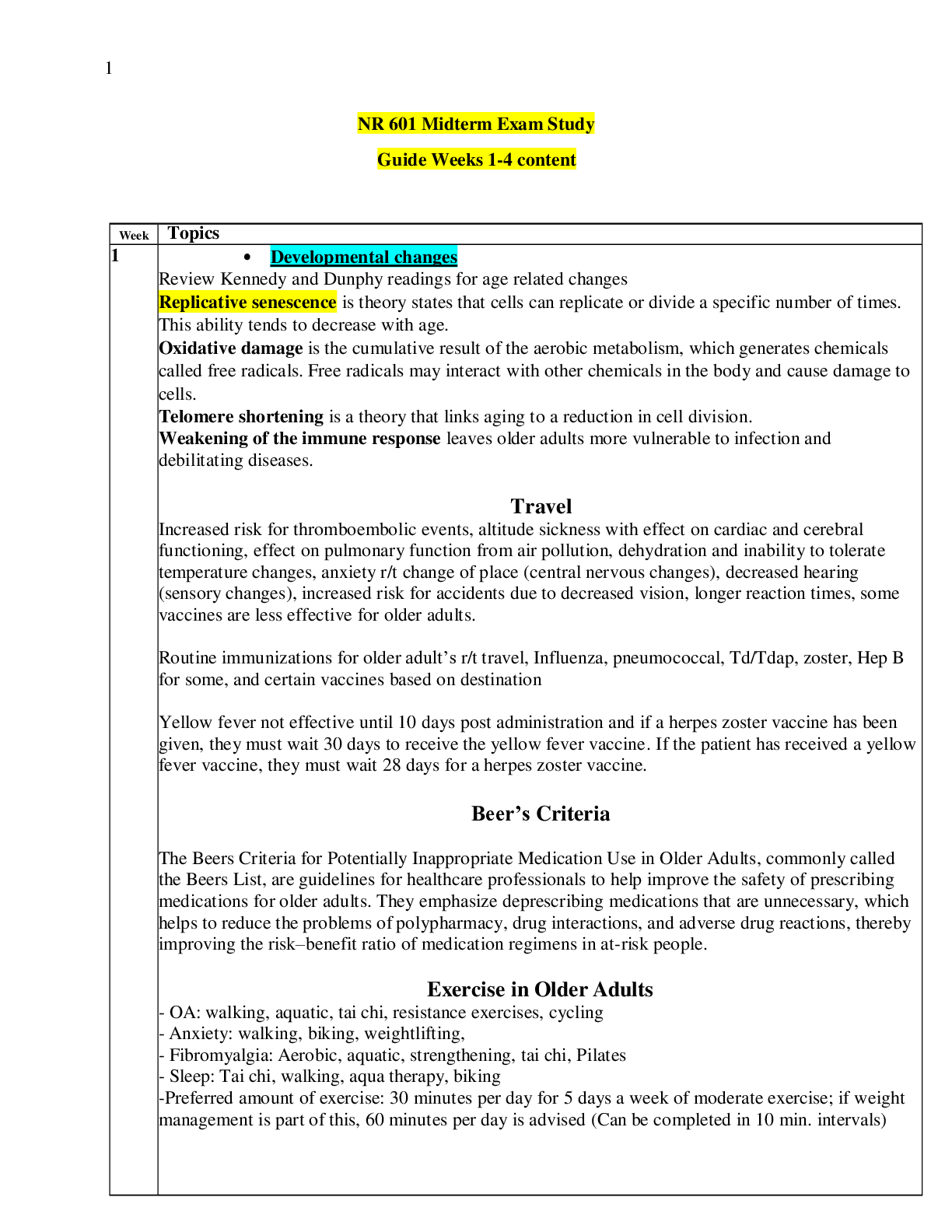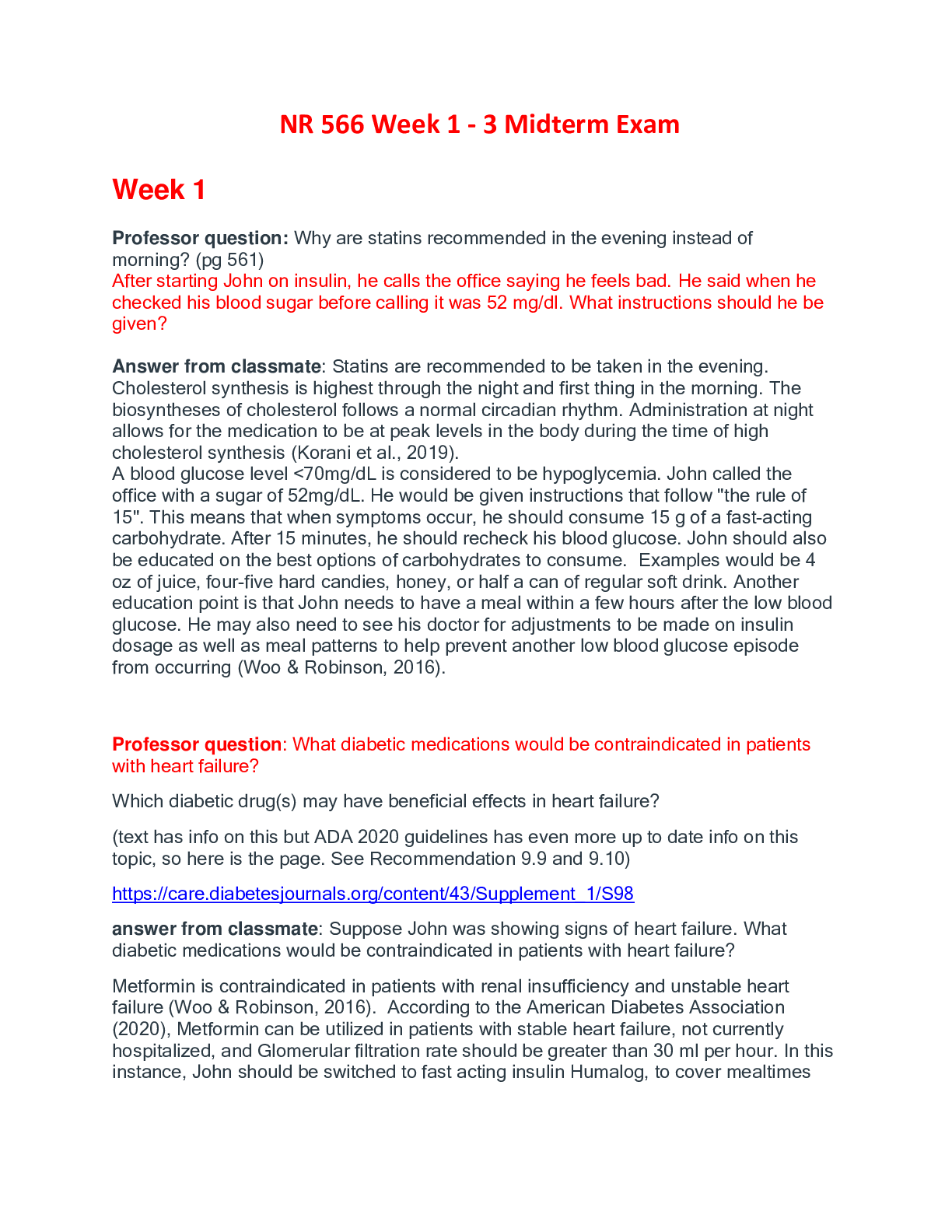*NURSING > STUDY GUIDE > NR 503 Week 4 Midterm Study Guide; Week 1 - 3 Definitions. (All)
NR 503 Week 4 Midterm Study Guide; Week 1 - 3 Definitions.
Document Content and Description Below
NR 503 Week 4 Midterm Study Guide; Week 1 - 3 Definitions. As we finish off week three & go into week four please remember that the Mid-Term exam is coming up. Please go back & review content fro... m the previous weeks: Week One – Definitions Epidemiology – Greek words epi, meaning on or upon; demos, meaning people, & logos, meaning the study of. Epidemiology is the study of the distribution & determinants of health- related states or events in specified populations & the application of this study to the control of health problems. Disease surveillance – The principal notification system in the United Sates is the National Notifiable Disease Surveillance System (NNDSS). This is state & local vital data for monitoring deaths from certain infectious diseases (influenza & aids). Surveillance for chronic disease usually relies upon health care related data (hospital discharge, surveys, mortality data from vital statistics). Tracks both active & passive diseases. Identifies stages of the disease within an individual & the populations, measures of incidence, attack rate, prevalence, mortality rates, case-fatality rates & years of potential life lost. Endemic – A disease or condition regularly found among particular people or in a certain area. “Malaria is an endemic” Epidemic – A widespread occurrence of an infectious disease in a community at a particular time. “a flu is epidemic” P&emic – Of a disease prevalent over a whole country or the world. An outbreak of a p&emic disease. Common vehicle – Refers to agents transmitted by a common inanimate vehicle (food), with multiple cases resulting from such exposure. Horizontal & vertical disease transmission Morbidity – The condition of being diseased. The rate of disease in a population. Mortality – The state of being subject to death. Death, especially on a large scale. Risk – AKA relative risk – compares the risk of a health event (diease, injury, risk factor, or death) among one group with the risk among another group. It does so by dividing the risk (incidence proportion, attack rate) in group 1 by the risk in group 2. Incidence – a measure of the probability of occurrence of a given medical condition in a population within a specified period of time. Although sometimes loosely expressed simply as the number of new cases during some time period, it is better expressed as a proportion or a rate with a denominator. Prevalence – Being widespread & it is distinct from incidence. It is a measurement of all individuals affected by the disease at a particular time, whereas incidence is a measurement of the number of new individuals who contract a disease during a particular period of time. The number of cases of a disease in a given time regardless of when it began. (new & old cases). Mortality rates – A measure of the frequency of occurrence of death in a defined population during a specified interval. Case-fatality rates – the proportion of people who die from a specified disease among all individuals diagnosed with the disease over a certain period of time. Disease impact Primary – Aimed at individuals in the susceptibility stage. Refers to activities or measures both individual & communal that are directed at reducing the risk of exposure to a risk factor or health determinant in an individual or the population. Ex: Immunization. Secondary – Measures focus on the sub-clinical stage & the early clinical stage. These measures enable early detection & prompt effective intervention to correct departures from a state of health. For Ex: BP screening or PAP smear. Tertiary prevention – Measures are directed primarily at the recovery, disability or death stage – although they are used to some extent at the clinical stage. The purpose is to reduce or eliminate long-term impairments & disabilities, minimize suffering optimize function, assist in adjusting to limitations in health & function resulting from the event & sometimes extend survival. For example: Treatment & Rehabilitation. Speech therapy following a CVA. Identify at least two key sources of epidemiological data. Week Two – Definitions Validity – The validity of any screening test is the ability of that test to distinguish correctly who has a disease. Based on specificity & sensitivity. Reliability Sensitivity – The ability of a test to correctly identify those who have a disease. TRUE POSITIVES. Specificity – The ability of a test to correctly identify those who do not have the disease. TRUE NEGATIVES. Positive predictive value – A proportional value of the proportion of people in any given population who are screened as positive & who actually have the disease. Negative predictive value – Also a proportion, but the opposite (& the probability that a result is a true negative). The number of true negatives divided by all of those who tested negative. Descriptive epidemiology – Organizes data by time, place & person. Magnitude – To underst& the magnitude of the problem you must identify the problem. Develop a conceptual framework for the underst&ing of the key determinants of the problem. Identify & develop strategies for intervention & set priorities & recommend intervention. Implement interventions & evaluate outcomes. Communicate strategy. Person, time, & disease impact. Obtaining population health information from different types of surveillance R&omized control trial based research including outcomes. Outcome measures/study designs for epidemiological subfields such as infectious disease, chronic disease, environmental exposures, reproductive health, & genetics. False Negative – Occurs when the test incorrectly reports the absence of disease when disease is in fact present. Secondary prevention – Interventions aimed at detecting a disease early in its course. Natural history of disease – Nature of the disease & how it progresses. True positive – Occurs when the test correctly reports disease presence when disease is in fact present Week Three – Definitions Risk Relative risk – AKA risk ratio is the ratio of the probability of an event occurring (for example, developing a disease, being injured), in an exposed group to the probability of the event occurring in a comparison, non-exposed group. Risk of disease in one group versus another. Risk of developing a disease after exposure. If this number is one, it means there is no risk. R(exposed)/Risk (unexposed). Odds ratio - Is a measure of association between an exposure & an outcome. The OR represents the odds that an outcome will occur given a particular exposure, compared to the odds of the outcome occurring in the absence of that exposure. A measure of exposure & disease outcome commonly used in case control studies. If you don’t underst& how to calculate rates, need to review. [Show More]
Last updated: 7 months ago
Preview 1 out of 3 pages

Also available in bundle (2)

NR 503 Entire Course Week 1 – 8 BUNDLED Exams, Discussions, Assignments, Study GUIDE and EXAM Reviews | 100% GUARANTEED Correct Solutions | Download For BEST Results.
NR 503 Week 1 Discussion: Exercise and Discussion Questions from Curley Text Book NR-503 Week 2 Assignment: Healthy People 2020 Impact Paper (3 Versions) NR 503 Week 2 Discussion: Epidemiologica...
By A+ Solutions 2 years ago
$14.5
22

NR 503 Week 4 Midterm Study Material (Collection) | 100% Guaranteed Pass | Download To Score An A
NR 503 Week 4 Midterm Study Guide (Questions – Answer) NR-503 Week 4 Midterm Study Guide (Epidemiology) NR 503 Week 4 Midterm Study Guide (Review & Guide) NR 503 Week 4 Midterm Review Questio...
By A+ Solutions 2 years ago
$14
6
Reviews( 0 )
Document information
Connected school, study & course
About the document
Uploaded On
Feb 01, 2022
Number of pages
3
Written in
Additional information
This document has been written for:
Uploaded
Feb 01, 2022
Downloads
0
Views
57


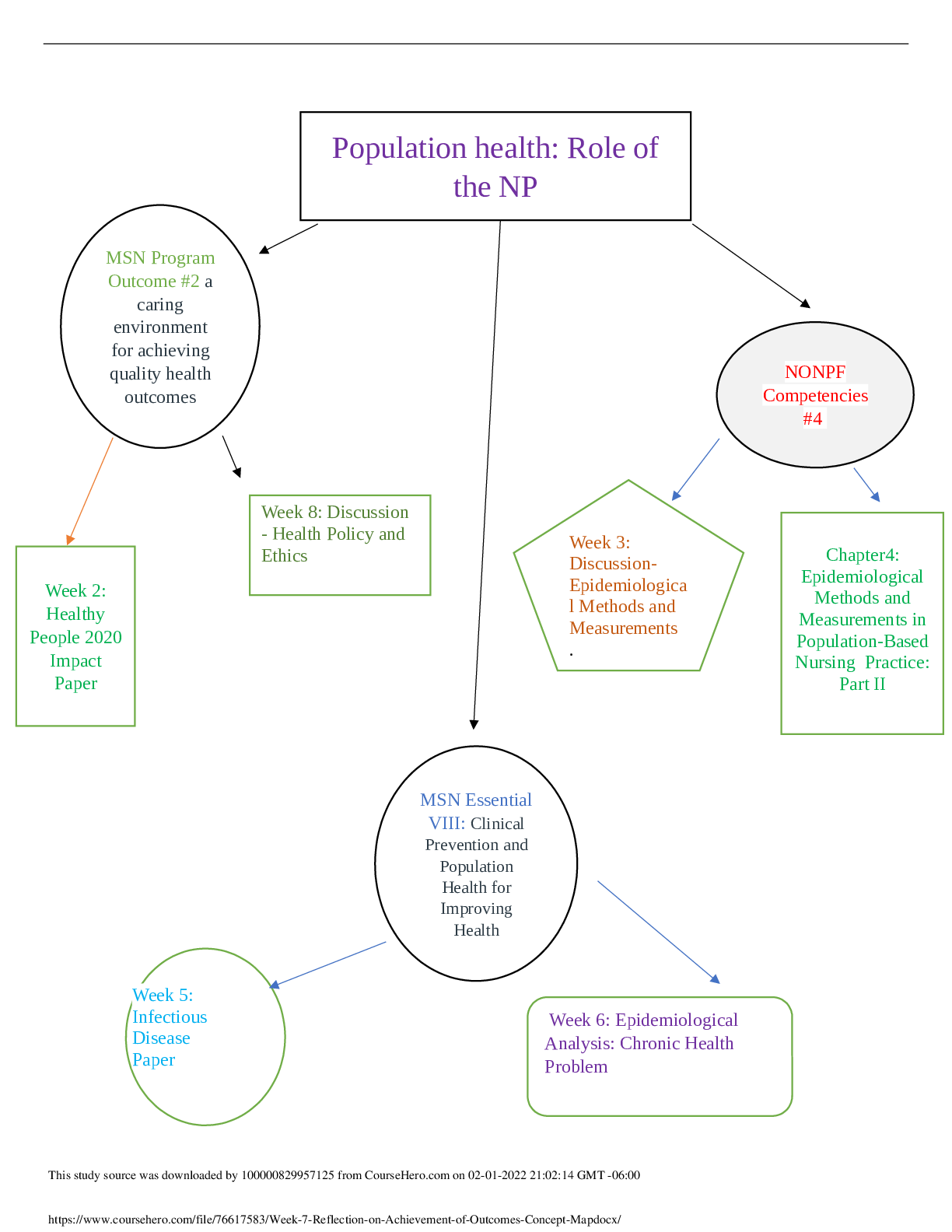
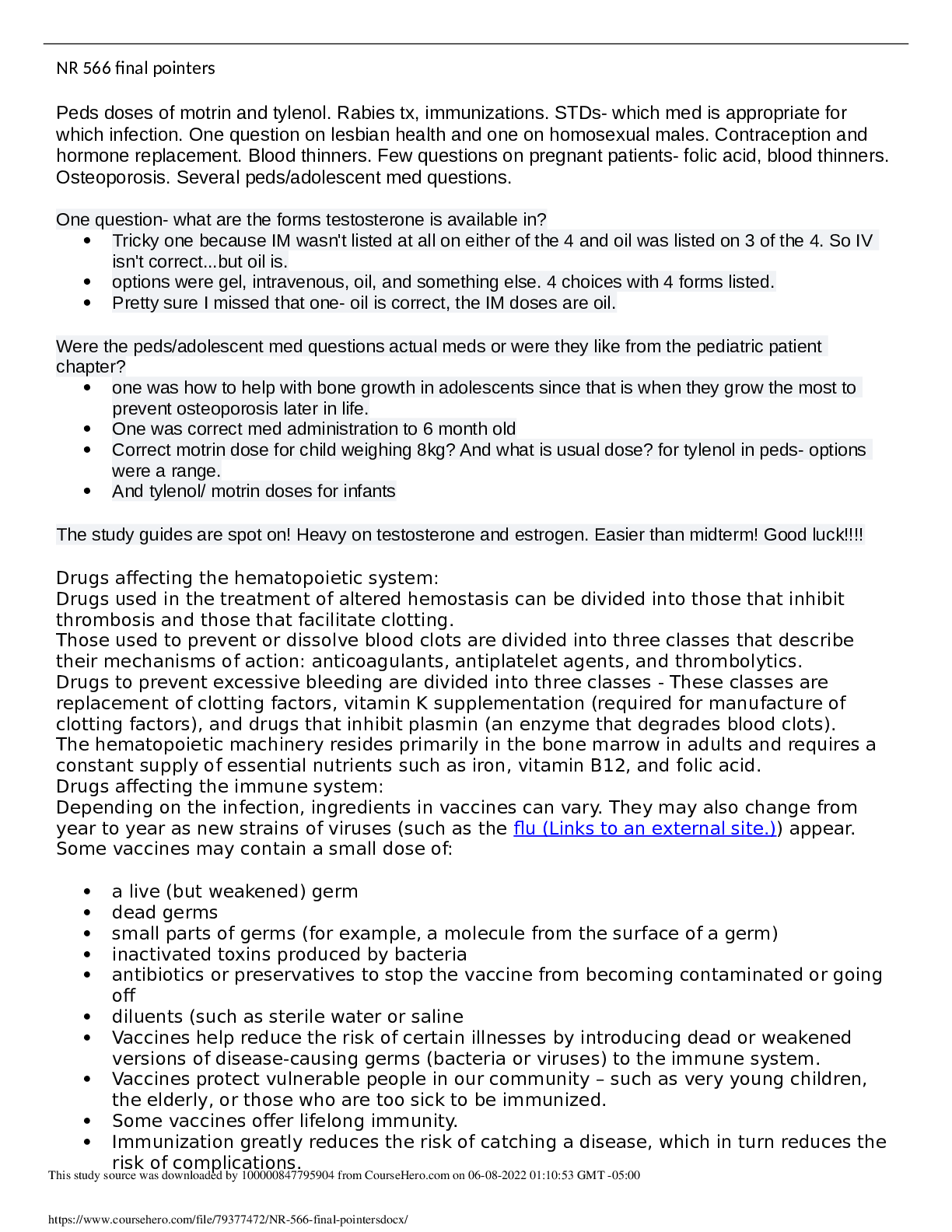

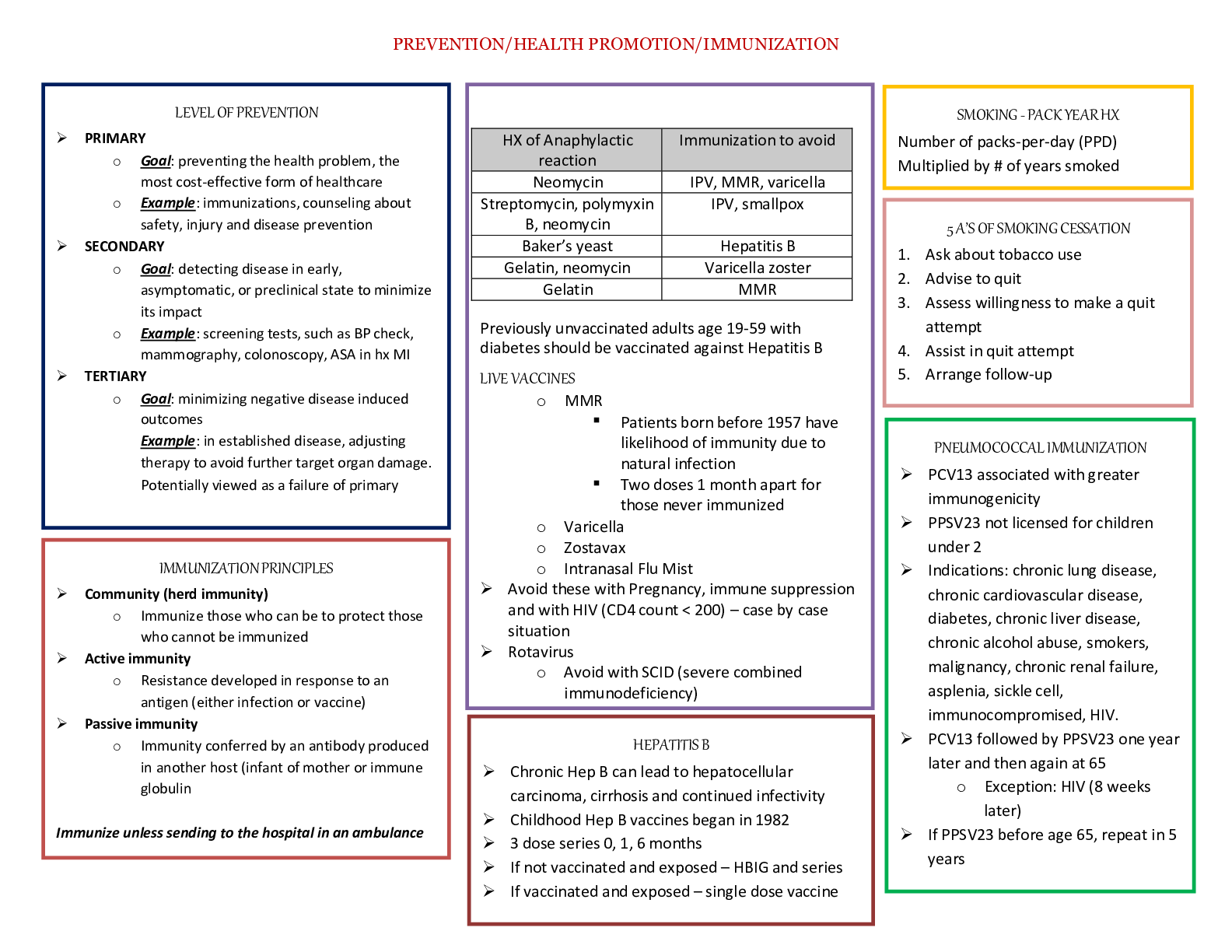
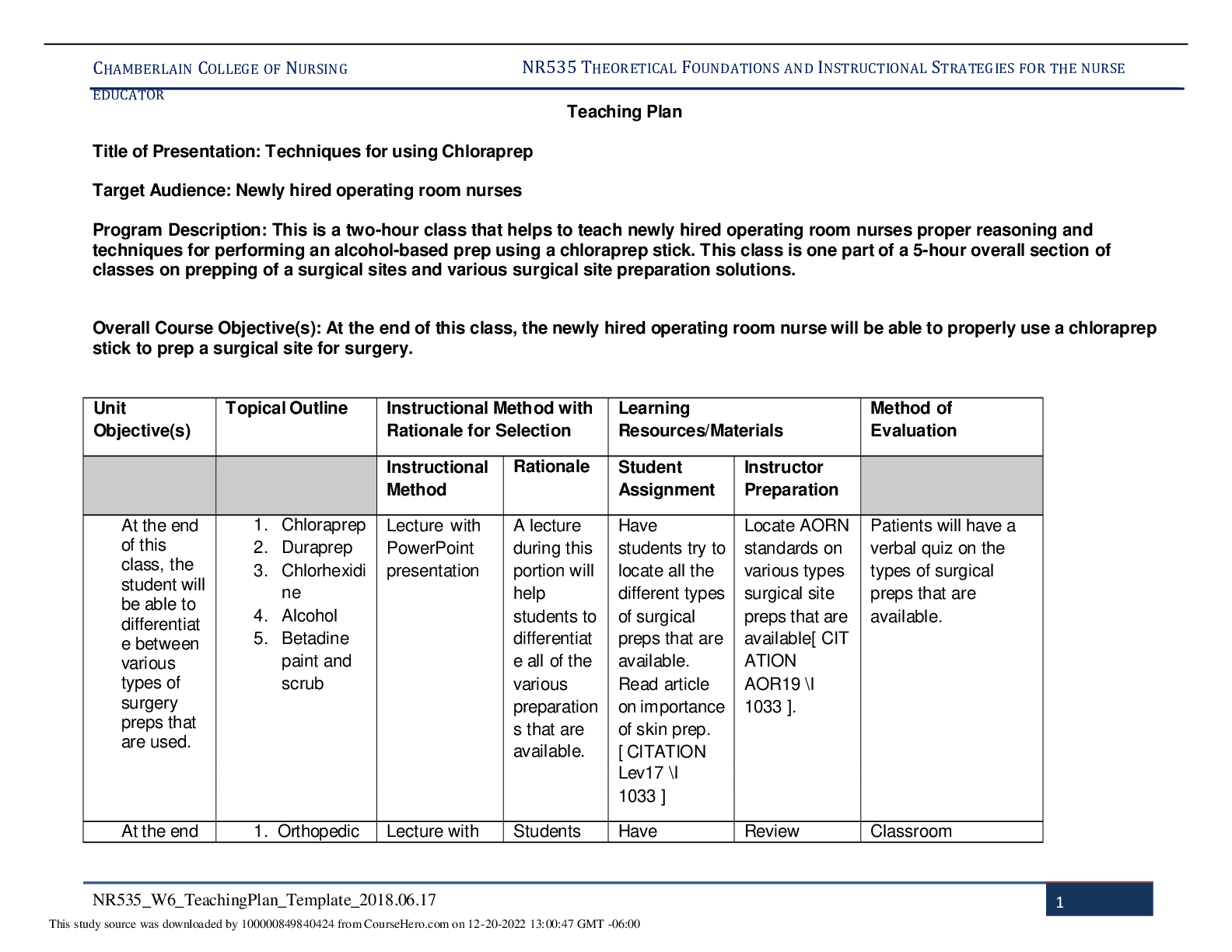

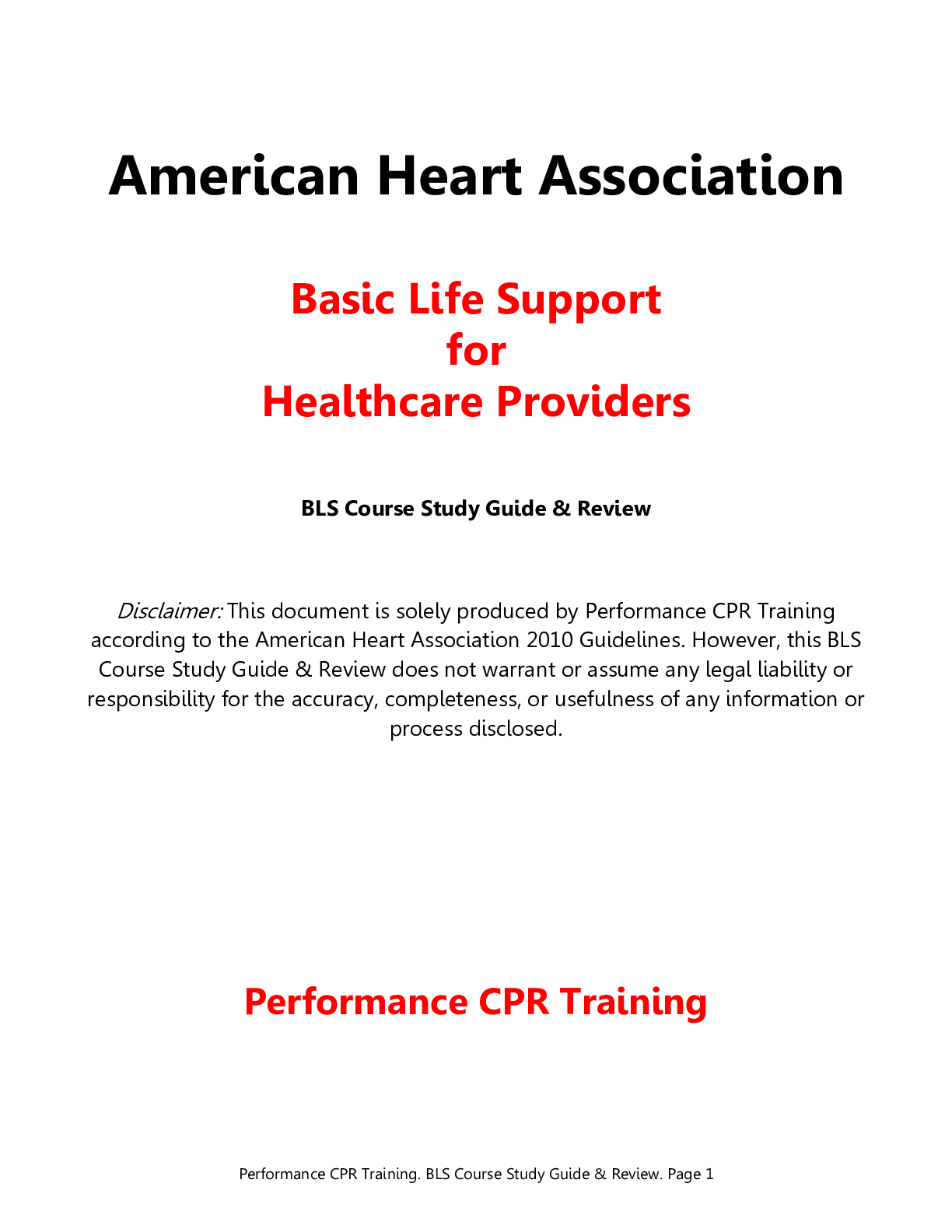
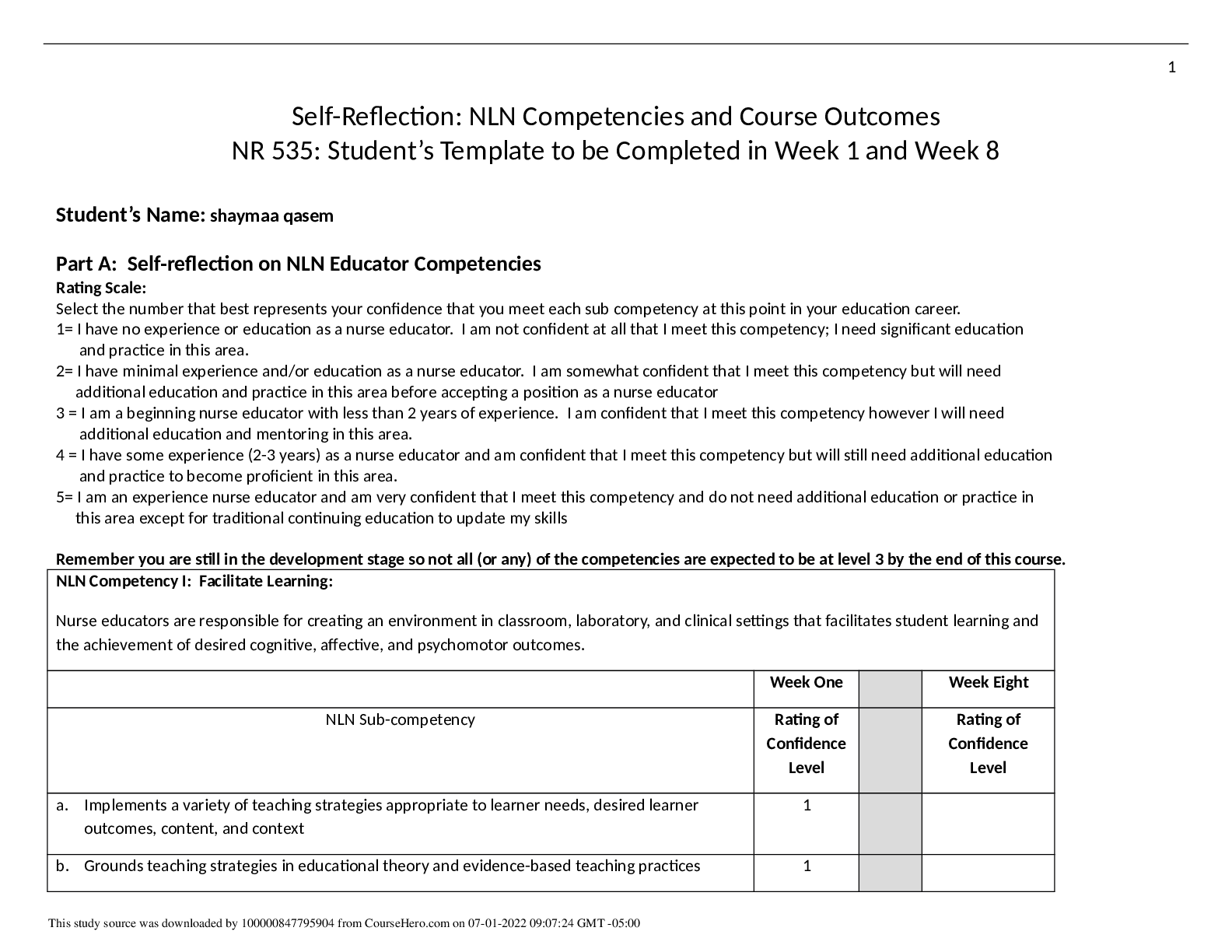

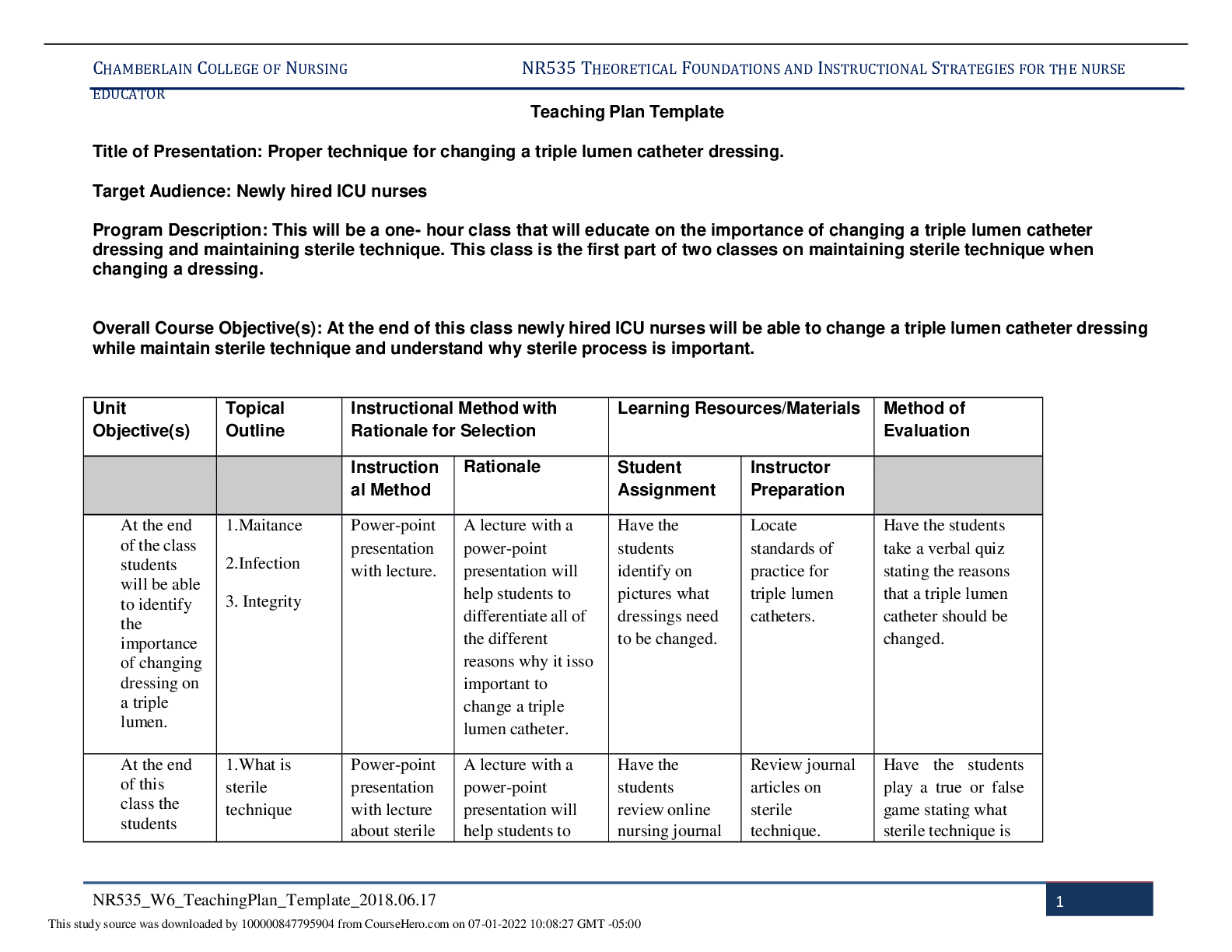
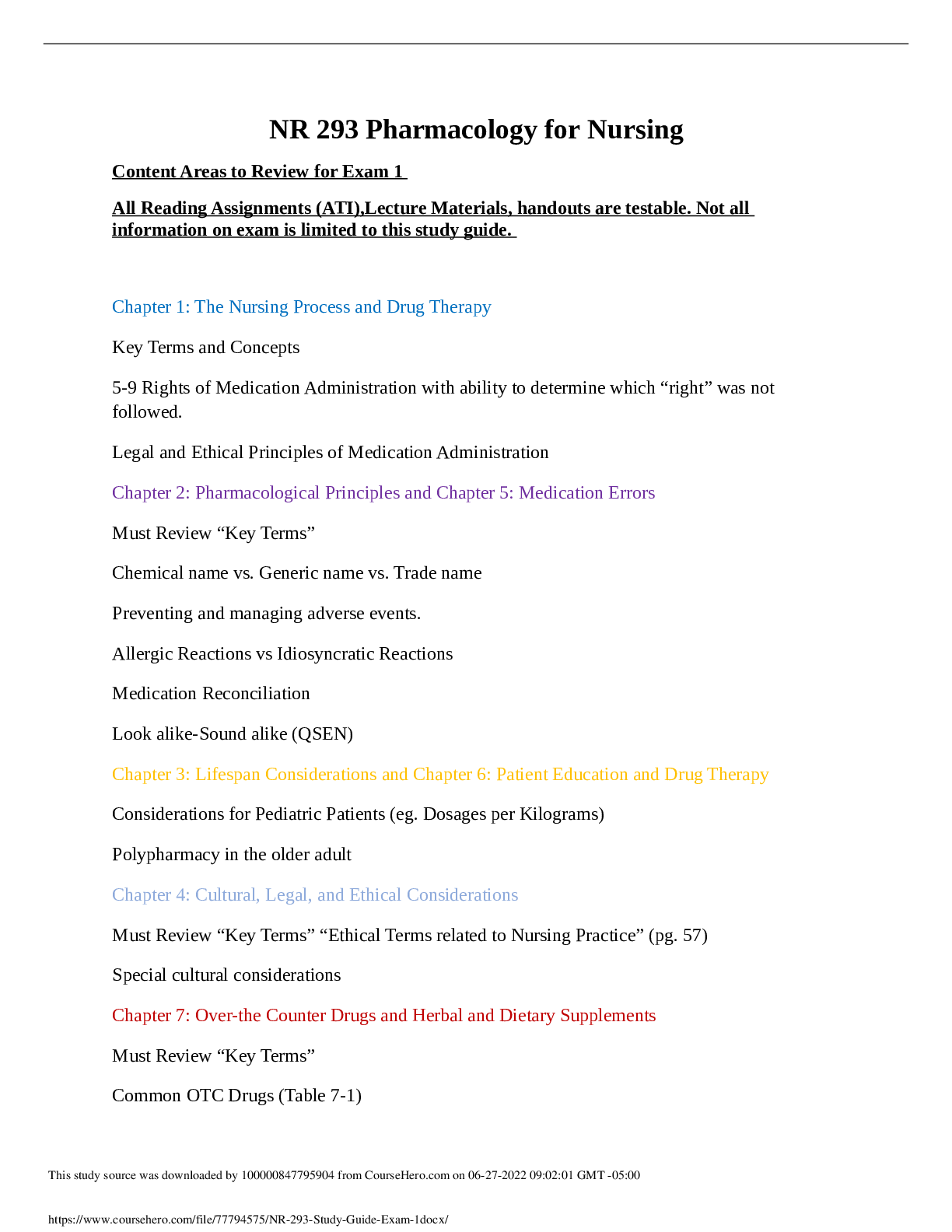

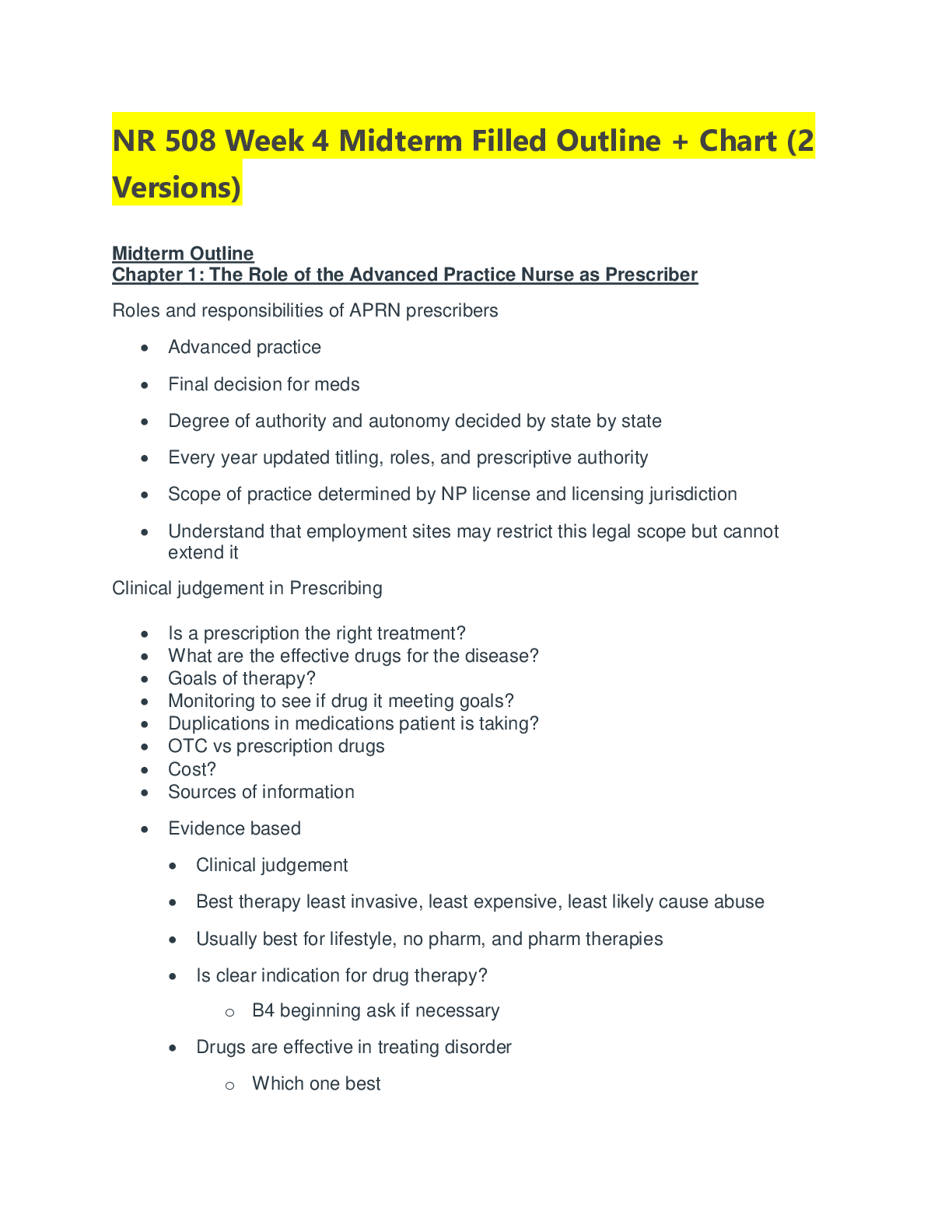


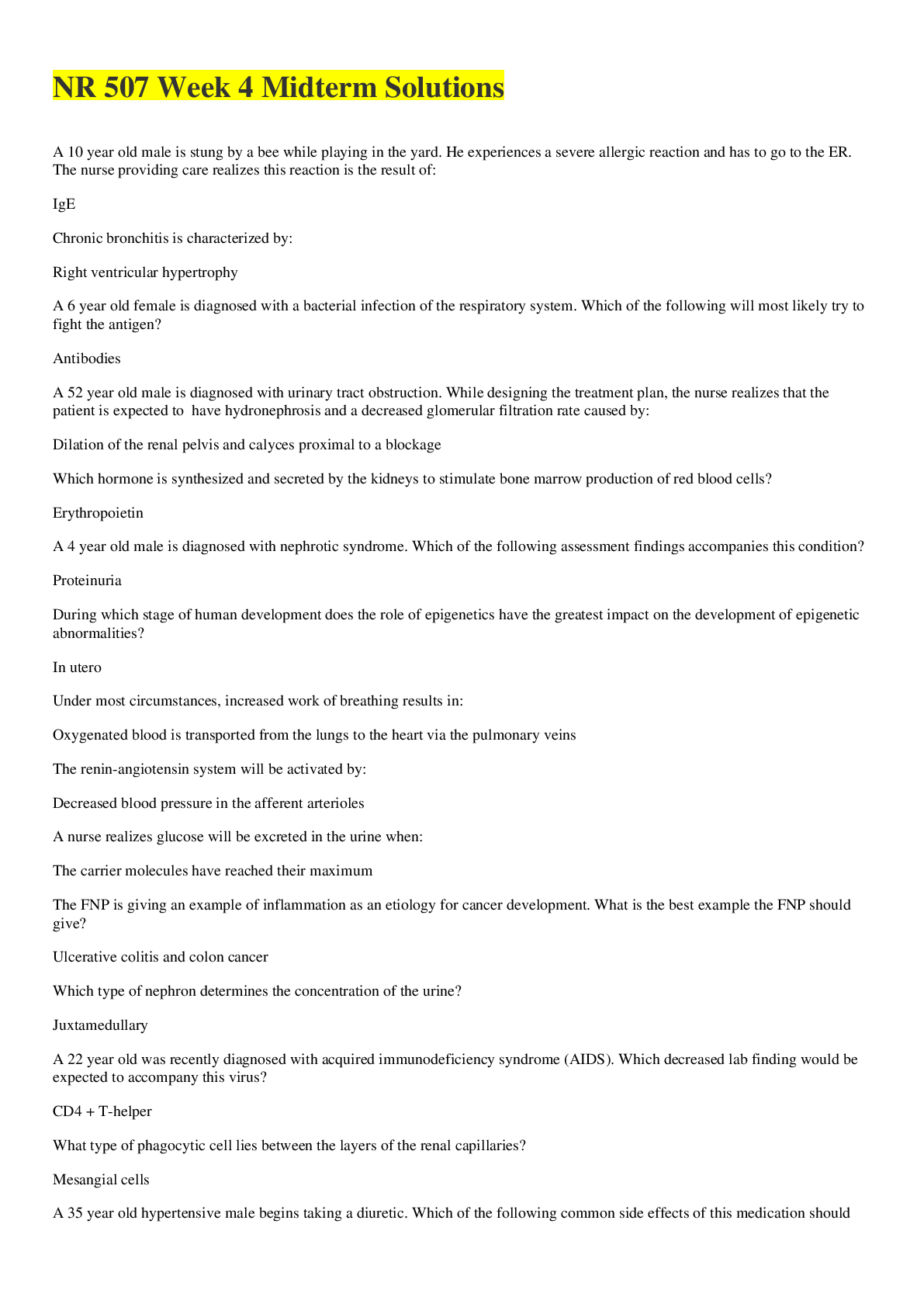

.png)
.png)
